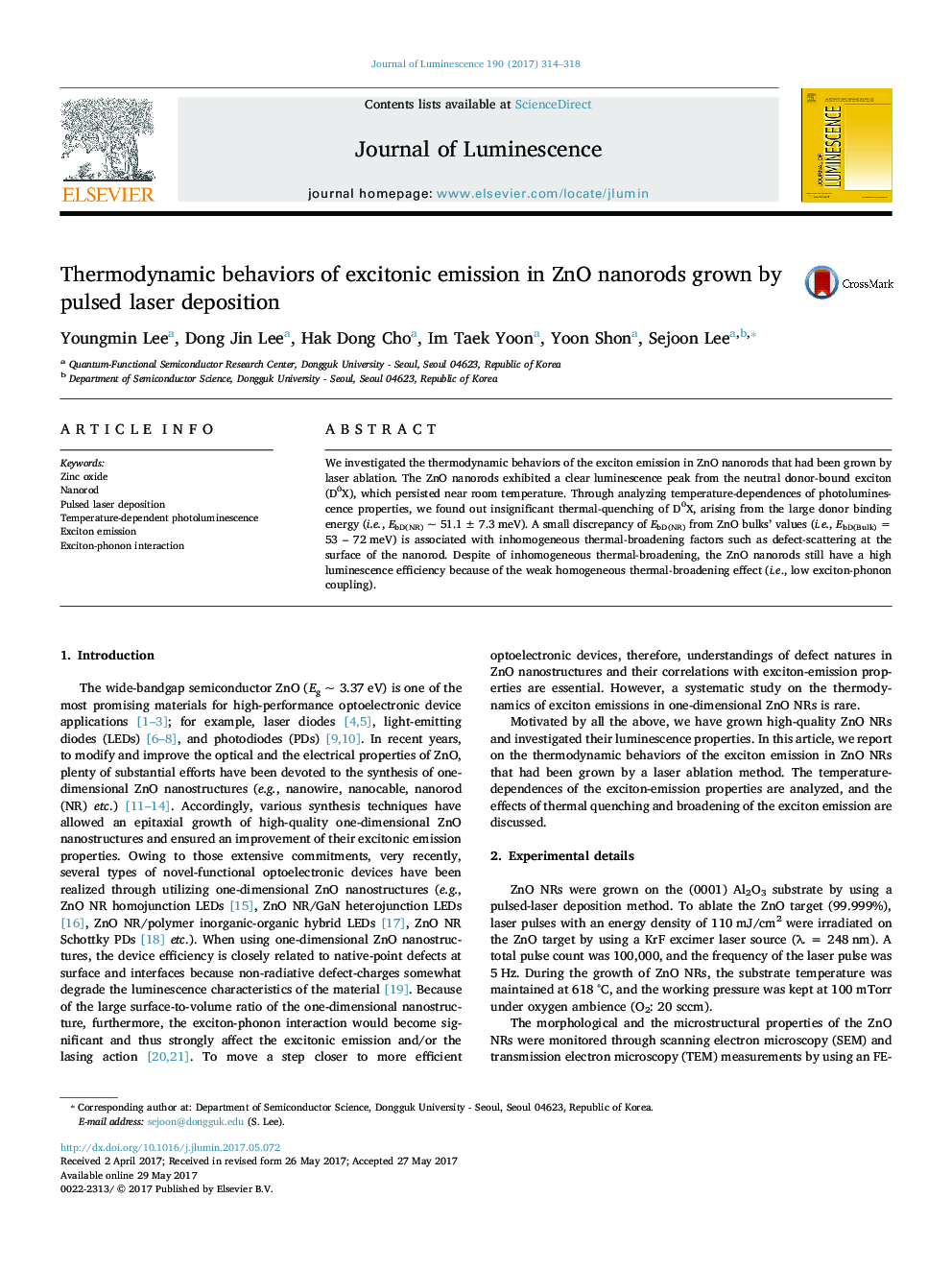| Article ID | Journal | Published Year | Pages | File Type |
|---|---|---|---|---|
| 5397541 | Journal of Luminescence | 2017 | 5 Pages |
Abstract
We investigated the thermodynamic behaviors of the exciton emission in ZnO nanorods that had been grown by laser ablation. The ZnO nanorods exhibited a clear luminescence peak from the neutral donor-bound exciton (D0X), which persisted near room temperature. Through analyzing temperature-dependences of photoluminescence properties, we found out insignificant thermal-quenching of D0X, arising from the large donor binding energy (i.e., EbD(NR) ~ 51.1 ± 7.3 meV). A small discrepancy of EbD(NR) from ZnO bulks' values (i.e., EbD(Bulk) = 53 - 72 meV) is associated with inhomogeneous thermal-broadening factors such as defect-scattering at the surface of the nanorod. Despite of inhomogeneous thermal-broadening, the ZnO nanorods still have a high luminescence efficiency because of the weak homogeneous thermal-broadening effect (i.e., low exciton-phonon coupling).
Keywords
Related Topics
Physical Sciences and Engineering
Chemistry
Physical and Theoretical Chemistry
Authors
Youngmin Lee, Dong Jin Lee, Hak Dong Cho, Im Taek Yoon, Yoon Shon, Sejoon Lee,
